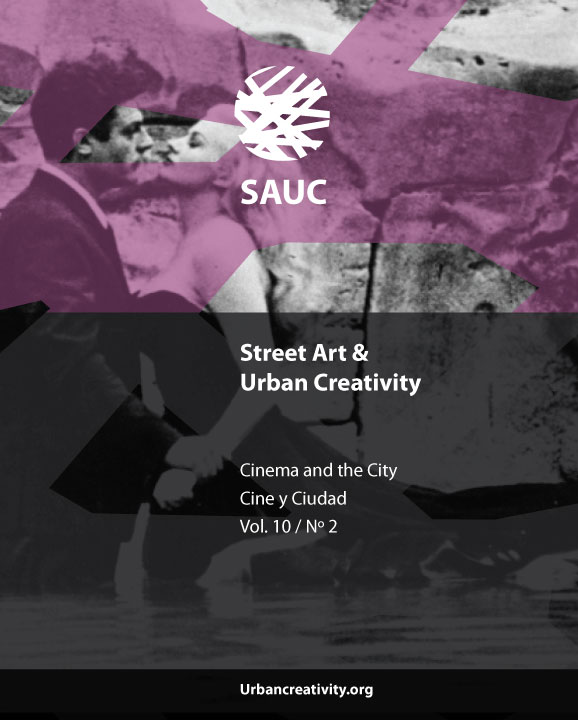The city as a poetic argument
anagnorisis and map of illusions in Columbus (Kogonada, 2017)
DOI:
https://doi.org/10.25765/sauc.v10i2.885Keywords:
ciudad, argumento, columbus, cine, anagnórisis, guiónAbstract
The film Columbus (Kogonada, 2017) poses a mirror relationship between the inner dynamism of the characters and the dynamism of the city. The latter is deployed in two senses: the cartography or tour of the city itself, that is, Columbus (Indiana, USA) that gives the film its title, and the architectural design of its buildings. This dramatic-cartographic-architectural triangle turns the work into a pertinent case study to understand the catalytic possibilities of the city in the discovery of personal identity and, in turn, to delve into the cinema-urban synergies. The link or ideal meeting between these two arts appears here as movement: the psychological-moral of the characters and the sculpture in museums, churches, squares, etc. that make up the city. Starting from a methodology based on the psychological notions of Aristotelian poetics (anagnorisis, catharsis) and the anthropological notions of Julián Marías about the projection of desire as a map of illusions (Marías, 2018), we propose a poetic analysis of the city of Columbus "Mecca" of architectural modernism in the USA - as a device to rehearse the happiness of the characters, mainly their possibilities of (self) recognition. To our critical apparatus we incorporate notions of audiovisual analysis (typology and shot composition) with support in architectural terminology on urban representation in cinema (Deltell and García, 2022). A concern, the latter, even prior to the filming of Columbus and that contributes to reinforcing the relevance of our proposal.
Downloads
Global Statistics ℹ️
|
241
Views
|
102
Downloads
|
|
343
Total
|
|
Downloads
Published
How to Cite
Issue
Section
License
Those authors who publish in this journal accept the following terms:
-
Authors retain copyright.
-
Authors transfer to the journal the right of first publication. The journal also owns the publishing rights.
-
All published contents are governed by an Attribution-NoDerivatives 4.0 International License.
Access the informative version and legal text of the license. By virtue of this, third parties are allowed to use what is published as long as they mention the authorship of the work and the first publication in this journal. If you transform the material, you may not distribute the modified work. -
Authors may make other independent and additional contractual arrangements for non-exclusive distribution of the version of the article published in this journal (e.g., inclusion in an institutional repository or publication in a book) as long as they clearly indicate that the work was first published in this journal.
- Authors are allowed and recommended to publish their work on the Internet (for example on institutional and personal websites), following the publication of, and referencing the journal, as this could lead to constructive exchanges and a more extensive and quick circulation of published works (see The Effect of Open Access).













